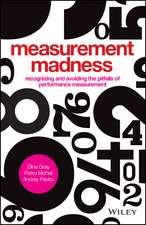Project Financing and the International Financial Markets
Autor Esteban C. Buljevich, Yoon S. Parken Limba Engleză Hardback – 30 iul 1999
The first part of the book provides an overview of certain funding and derivative instruments currently used in the international financial markets, including a general overview of financial innovations that have occurred in recent decades. Topics covered include an introduction to the syndicated Euro-credit market; an overview of various marketable debt securities actively used in the international financial markets; an introduction to depositary receipt as an innovative way of raising cross-border equity capital; an elaboration of the derivative instruments most commonly used in the project financing arena, including interest rate, currency and commodity swaps; and finally an overview of banks' off-balance sheet activities as a critical driving force for the participation of banks in the international financial and derivative markets.
The second part of the book provides an in-depth analysis of project financing that concentrates on the financier's perspective. Topics covered include a general overview of the project financing industry; a step-by-step description of a typical cross-border project finance transaction; a description of the main characteristics and advantages of project financing as opposed to more traditional corporate lending practices; an overview of appraisal techniques for assessing project financing; a comprehensive analysis of the different risk management techniques used in project financing for reducing, distributing and hedging risks; and a brief overview of certain limited-resource financing schemes. The book includes a special focus on the various stages of the risk management process for project financing, elaborating on the different stages of risk identification, risk assessment, risk reduction, risk distribution and hedging and insurance. The authors also provide a comprehensive glossary of terms relating to international finance and project financing. This book will fulfill the need for an essential text on project financing as well as a professional reference guide.
| Toate formatele și edițiile | Preț | Express |
|---|---|---|
| Paperback (1) | 945.92 lei 6-8 săpt. | |
| Springer Us – 20 mar 2013 | 945.92 lei 6-8 săpt. | |
| Hardback (1) | 950.33 lei 6-8 săpt. | |
| Springer Us – 30 iul 1999 | 950.33 lei 6-8 săpt. |
Preț: 950.33 lei
Preț vechi: 1158.95 lei
-18% Nou
Puncte Express: 1425
Preț estimativ în valută:
181.84€ • 189.86$ • 150.50£
181.84€ • 189.86$ • 150.50£
Carte tipărită la comandă
Livrare economică 04-18 aprilie
Preluare comenzi: 021 569.72.76
Specificații
ISBN-13: 9780792385240
ISBN-10: 0792385241
Pagini: 332
Ilustrații: XX, 302 p.
Dimensiuni: 156 x 234 x 23 mm
Greutate: 0.59 kg
Ediția:1999
Editura: Springer Us
Colecția Springer
Locul publicării:New York, NY, United States
ISBN-10: 0792385241
Pagini: 332
Ilustrații: XX, 302 p.
Dimensiuni: 156 x 234 x 23 mm
Greutate: 0.59 kg
Ediția:1999
Editura: Springer Us
Colecția Springer
Locul publicării:New York, NY, United States
Public țintă
ResearchDescriere
Since the 1970s, the practice of financing major private and public sector capital-intensive projects has shifted to an ever-greater reliance on private funding sources, as opposed to direct financing through the issuance of corporate or government bonds. In the 1990s, these financing practices have undergone further changes with the increasing globalization of capital markets, the growth of derivative instruments, and the rapid increase in information technology that enhances cash-management practices. Today's project financing market is increasingly using sophisticated capital market, bank and agency financing mechanisms as well as using derivative instruments for asset and liability management. Thus, financial market innovations are bringing the once separate fields of project financing and international finance more closely together. This is the first book to treat both topics as an interrelated whole, for contemporary project financing cannot be fully understood without a good working knowledge of the international financial markets that have developed the various financing techniques and funding sources being used. The book provides an in-depth description of cross-border project financing as a technique for financing capital-intensive projects, as well as an overview of certain financing and derivative instruments currently available in the global financial markets.
The first part of the book provides an overview of certain funding and derivative instruments currently used in the international financial markets, including a general overview of financial innovations that have occurred in recent decades. Topics covered include an introduction to the syndicated Euro-credit market; an overview of various marketable debt securities actively used in the international financial markets; an introduction to depositary receipt as an innovative way of raising cross-border equity capital; an elaboration of the derivative instruments most commonly used in the project financing arena, including interest rate, currency and commodity swaps; and finally an overview of banks' off-balance sheet activities as a critical driving force for the participation of banks in the international financial and derivative markets.
The second part of the book provides an in-depth analysis of project financing that concentrates on the financier's perspective. Topics covered include a general overview of the project financing industry; a step-by-step description of a typical cross-border project finance transaction; a description of the main characteristics and advantages of project financing as opposed to more traditional corporate lending practices; an overview of appraisal techniques for assessing project financing; a comprehensive analysis of the different risk management techniques used in project financing for reducing, distributing and hedging risks; and a brief overview of certain limited-resource financing schemes. The book includes a special focus on the various stages of the risk management process for project financing, elaborating on the different stages of risk identification, risk assessment, risk reduction, risk distribution and hedging and insurance. The authors also provide a comprehensive glossary of terms relating to international finance and project financing. This book will fulfill the need for an essential text on project financing as well as a professional reference guide.
The first part of the book provides an overview of certain funding and derivative instruments currently used in the international financial markets, including a general overview of financial innovations that have occurred in recent decades. Topics covered include an introduction to the syndicated Euro-credit market; an overview of various marketable debt securities actively used in the international financial markets; an introduction to depositary receipt as an innovative way of raising cross-border equity capital; an elaboration of the derivative instruments most commonly used in the project financing arena, including interest rate, currency and commodity swaps; and finally an overview of banks' off-balance sheet activities as a critical driving force for the participation of banks in the international financial and derivative markets.
The second part of the book provides an in-depth analysis of project financing that concentrates on the financier's perspective. Topics covered include a general overview of the project financing industry; a step-by-step description of a typical cross-border project finance transaction; a description of the main characteristics and advantages of project financing as opposed to more traditional corporate lending practices; an overview of appraisal techniques for assessing project financing; a comprehensive analysis of the different risk management techniques used in project financing for reducing, distributing and hedging risks; and a brief overview of certain limited-resource financing schemes. The book includes a special focus on the various stages of the risk management process for project financing, elaborating on the different stages of risk identification, risk assessment, risk reduction, risk distribution and hedging and insurance. The authors also provide a comprehensive glossary of terms relating to international finance and project financing. This book will fulfill the need for an essential text on project financing as well as a professional reference guide.
Cuprins
Acronyms. About the Authors. Introduction. 1. Overview of Financial Innovations in the International Financial Markets. 2. Syndicated Eurocredit Loans. 3. Marketable Debt Securities in the International Financial Markets. 4. Depositary Receipts. 5. Interest Rate, Currency and Commodity Derivatives. 6. Off-balance Sheet Activities of Commercial Banks. 7. What is Project Financing? 8. Description of a Project Finance Transaction. 9. Advantages and Characteristics of Project Financing. 10. Appraisal Techniques in Project Financing. 11. Risk Identification and Risk Assessment in Project Financing. 12. Risk Management Techniques in Project Financing. 13. Limited-recourse Structures. Glossary of Terms. Bibliography. Index.



















